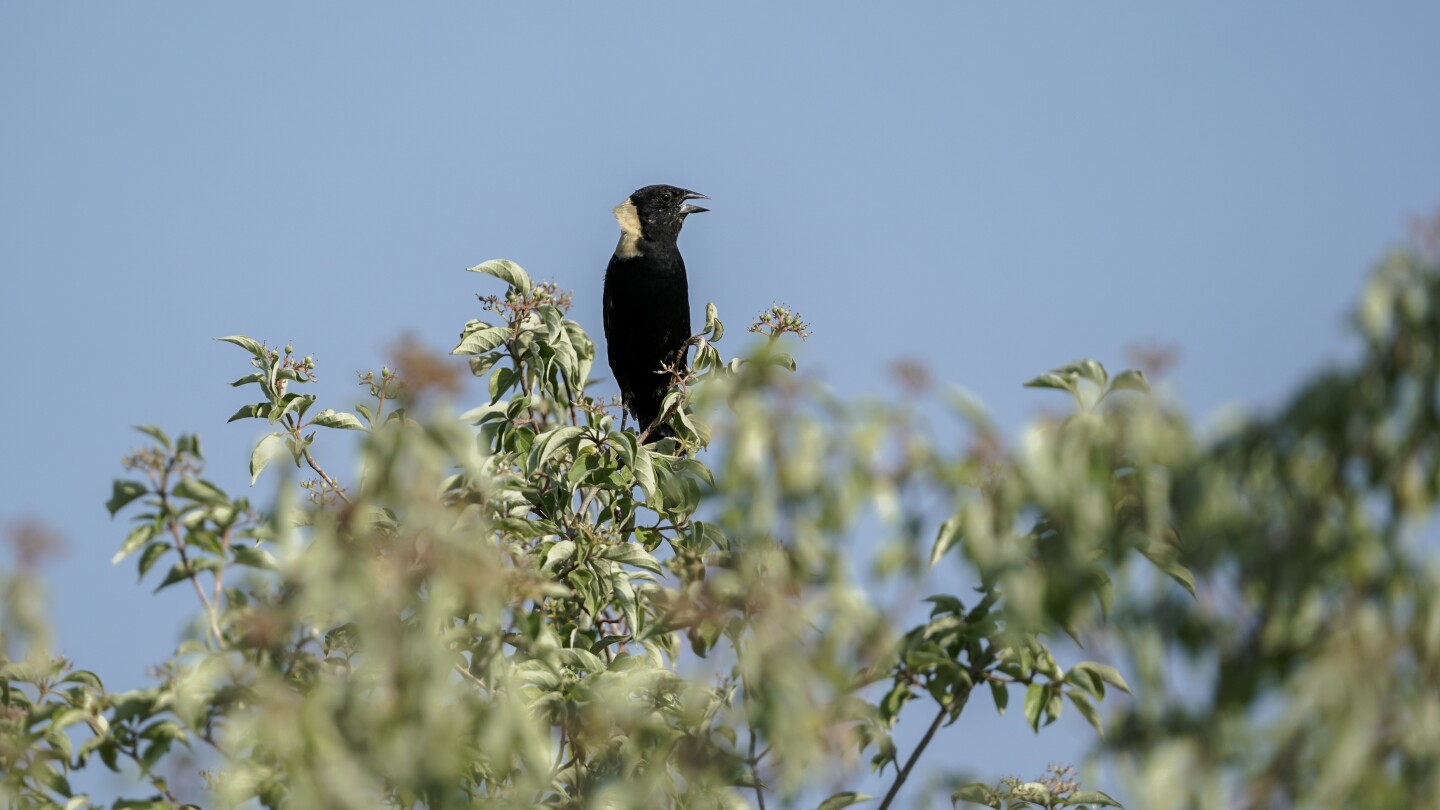POTTER, Neb. (AP) — When Reed Cammack hears the first meadowlark of spring, he knows his family has made it through another cold, snowy winter on the western South Dakota prairie. Nothing’s better, he says, than getting up at sunrise as the birds light up the area with song.
“It’s part of the flora and fauna of our Great Plains and it’s beautiful to hear,” says Cammack, 42, a sixth-generation rancher who raises cattle on 10,000 acres (4,047 hectares) of mostly unaltered native grasslands.
But the number of returning birds has dropped steeply, despite seemingly ideal habitat. “There are quite a few I don’t see any more and I don’t know for sure why,” says Cammack’s 92-year-old grandfather, Floyd. whose family has allowed conservation groups to install a high-tech tracking tower and to conduct bird surveys.
North America’s grassland birds are deeply in trouble 50 years after adoption of the Endangered Species Act, with numbers plunging as habitat loss, land degradation and climate change threaten what remains of a once-vast ecosystem.
Over half the grassland bird population has been lost since 1970 — more than any other type of bird. Some species have declined 75% or more, and a quarter are in extreme peril.
And the 38% — 293,000 square miles (760,000 square kilometers) — of historic North American grasslands that remain are threatened by intensive farming and urbanization, and as trees once held at bay by periodic fires spread rapidly, consuming vital rangeland and grassland bird habitat.
North America’s grassland birds are in trouble 50 years after adoption of the Endangered Species Act. Habitat loss, land degradation and climate change threaten what remains of a once-vast ecosystem. (Aug. 25) (AP Video: Joshua A. Bickel and Brittany Peterson)
So biologists, conservation groups, government agencies and, increasingly, farmers and ranchers are teaming up to stem or reverse losses.
Scientists are sharing survey and monitoring data and using sophisticated computer modeling to determine the biggest threats. They’re intensifying efforts to tag birds and installing radio telemetry towers to track their whereabouts. And they’re working with farmers and ranchers to implement best practices that ensure survival of their livelihoods and native birds — both dependent on a healthy ecosystem.
“Birds are the canary in the coal mine,” says Amanda Rodewald, senior director of the Center for Avian Population Studies at Cornell University’s ornithology lab. “They’re an early warning of environmental changes that also can affect us.”

